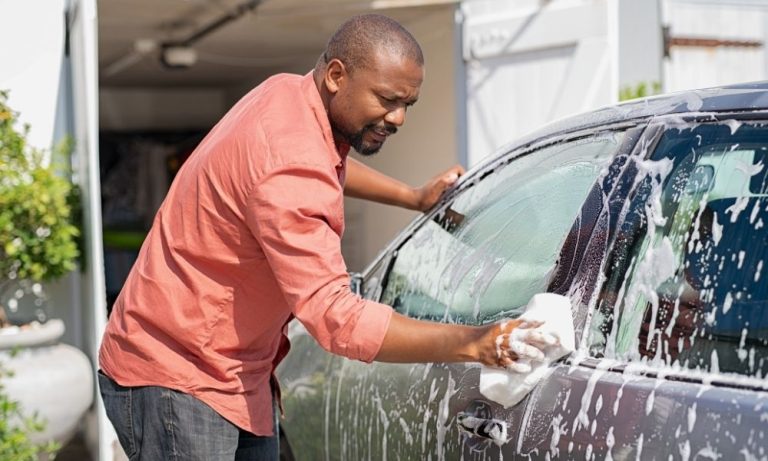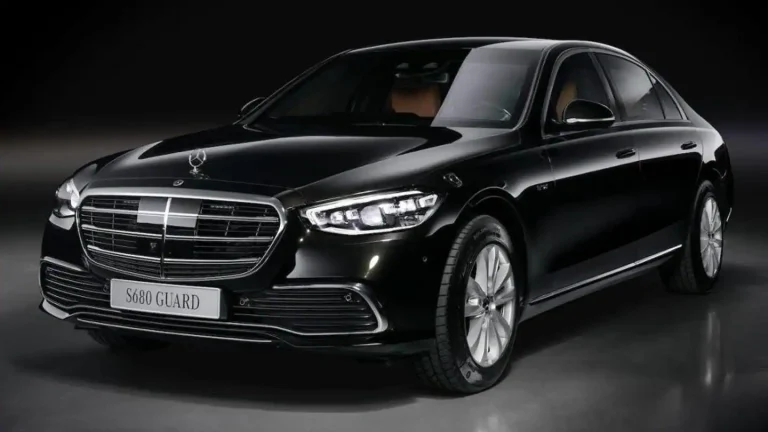As urban travel continues to shift toward micromobility, more people are trying electric scooters for the first time. If you’ve ever ridden a kick scooter as a child, you’ll find that using an electric one feels familiar—though there are some big differences, such as being able to accelerate up to 25 mph.
Riding an e-scooter is an exciting and practical way to get around, but it can feel a bit challenging when you’re just starting out. To help you enjoy the experience and stay safe, this guide offers essential tips every new rider should know. From choosing the right safety gear to avoiding common mistakes, you’ll learn how to ride confidently while keeping yourself and others protected.
Here are some detailed tips and tricks for new electric scooter riders:
1. Safety First: Always prioritize safety by wearing a helmet, knee pads, and elbow pads.
2. Get to Know Your E-Scooter: Familiarize yourself with the features and functions of your e-scooter before you start riding.
3. Pre-Ride Checks: Inspect your scooter to ensure everything is in working order—check the brakes, tires, and battery charge.
4. How to Stand on an Electric Scooter: Position yourself comfortably with one foot in front of the other for balance.
5. Accelerate Slowly: Gradually increase speed to maintain control, especially when you’re just learning.
6. How to Steer an E-Scooter: Use subtle body movements to steer. Lean slightly in the direction you want to go, rather than turning the handlebars sharply.
7. Learn How to Brake Safely: Practice braking in a safe area. Get a feel for your scooter’s response time and the pressure needed to stop smoothly.
8. Keep Your Eyes on the Road: Always be aware of your surroundings. Watch out for pedestrians, obstacles, and other vehicles.
9. Avoid These Common Mistakes: Don’t ignore traffic signals, and avoid riding on sidewalks unless local laws permit.
Let’s explore each of these tips in detail to help you feel confident and prepared for every ride.
Safety First
Wearing protective gear is essential when riding any motorized vehicle, and electric scooters are no exception. No matter the terrain or weather, there’s always a risk of falling or colliding, so safety gear is your first line of defense. A helmet is the most important item—it significantly reduces the risk of serious head injuries.
Unlike a car, an e-scooter doesn’t provide a protective frame around you. That’s why it’s important to wear clothing that covers your arms and legs, and consider adding elbow and knee pads for extra protection. Choose sturdy, closed-toe shoes for proper grip and stability—avoid sandals or flip-flops.
Protecting your hands is equally important. During a fall, your natural reaction is to reach out with your hands, which can lead to cuts, scrapes, or even broken bones. Wearing gloves with padded palms can help prevent injuries.
If your scooter folds, take time to learn how to fold and unfold it correctly. Make sure it’s securely locked before riding and folded properly when storing. This will not only keep your scooter safe but also make it easier to carry and manage.
Get to Know Your Scooter
Before riding in areas with traffic, pedestrians, or other riders, spend time getting familiar with your electric scooter. Each model can feel different in terms of weight, balance, and handling. Start by practicing in an open, flat space where you can safely build your confidence.
Learn how each control works, including the throttle, lights, and brakes. Some scooters require a kick-start, which means pushing off with one foot to activate the motor, while others accelerate from a complete stop.
Pay attention to how smoothly your scooter accelerates and how sensitive the brakes feel. Understanding these responses will help you avoid sudden movements that could cause accidents.
If your scooter is foldable, also practice folding and unfolding it. Knowing how to secure it properly before riding and store it safely afterward will make your overall experience more convenient and secure.
Pre-Ride Checks
Before every ride, do a quick inspection to make sure everything is functioning properly. This ensures not only a smoother ride but also your safety. Here’s a checklist to follow:
- Inspect the tires for damage or wear.
- Make sure they’re properly inflated.
- Check that the battery is fully charged.
- Test the brakes for responsiveness.
- Ensure that all lights are working.
- Lock the folding mechanism securely.
- Confirm that the throttle is working correctly.
- Listen for any unusual sounds.
- Tighten any loose parts.
- Check the overall condition of the scooter.
Doing this regularly keeps you safe and can extend the lifespan of your e-scooter.
How to Stand on an Electric Scooter
Riding an e-scooter becomes easier once you find the right stance. Turn on your scooter, lift the kickstand, and hold the handlebars firmly for balance.
If your scooter needs a kick-start, place your less dominant foot at the front of the deck and push off with your dominant foot. If it’s a zero-start model, gently press the throttle to move forward. Always hold the handlebars with both hands and lean slightly forward.
Once you’re moving, place your dominant foot behind your front foot, forming an “L” shape. This is the most stable stance for riding. Some riders prefer the “goofy” stance (dominant foot forward), which is also fine if it feels more natural.
Avoid standing with your feet side by side, as this makes it harder to shift your weight and control the scooter. Practice these techniques in a safe area until you feel stable and confident.
Accelerate Slowly
Once you’re comfortable with your stance, begin practicing how to accelerate. Gently press the throttle to slowly build up speed. This helps you get used to how your scooter responds and prevents sudden movements that could cause you to lose control.
If your scooter has dual motors, it will accelerate faster than single-motor models. Start with one motor on the lowest setting and increase gradually as you gain confidence. Always slow down before switching modes to avoid a sudden drop in power.
As you speed up, lean slightly forward without pulling on the handlebars. Shift your weight forward with your feet to keep your balance and maintain control.
How to Steer an E-Scooter
Proper steering depends on your speed. At lower speeds, gently turn the handlebars in the direction you want to go. Avoid sudden or sharp turns, as they can cause you to lose balance.
Start practicing turns at a slow speed. As you gain confidence, you’ll rely more on shifting your weight and less on turning the handlebars. Engage your core muscles and use your feet to guide your movement.
At higher speeds, leaning into turns becomes more effective than turning the handlebars. This method gives you more control and a smoother riding experience.
Learn How to Brake Safely
Knowing how to brake correctly is one of the most important skills when riding an electric scooter. Since scooters lack the protective features of a car, proper braking can make a big difference in preventing accidents.
Familiarize yourself with how your scooter’s braking system works. To brake safely, start by applying the rear brake first, followed by the front brake. Relying only on the front brake can cause the scooter to stop too abruptly and throw you off balance.
As you brake, lean slightly backward and bend your knees to lower your center of gravity. This improves stability and reduces forward momentum. Also, avoid braking sharply while turning. If you need to stop, straighten up first to prevent skidding.
Adjust your speed to the conditions, especially when going downhill or on slippery surfaces. Controlled braking helps you maintain balance and stay safe.
Keep Your Eyes on the Road
Staying alert is crucial when riding an electric scooter. The excitement of the ride can distract you, but it’s important to keep your eyes focused ahead.
Always watch for pedestrians, vehicles, and obstacles. Keep track of traffic signs and anticipate the movements of others on the road. Many drivers may not expect a scooter, so being alert can prevent accidents.
Pay close attention to road conditions, especially in wet or uneven areas. Adjust your speed and riding style to stay in control and avoid potential hazards.
Avoid These Common Mistakes
It’s easy to make mistakes as a beginner, but knowing what to avoid can keep you safe. Here are some common errors and how to prevent them:
- Overusing the Throttle: Pressing too hard can cause the scooter to lurch forward. Always accelerate gradually.
- Braking Too Suddenly: Abrupt braking can throw you off balance. Instead, apply pressure smoothly and shift your weight backward.
- Leaning Too Much on Turns: Over-leaning can cause you to fall. Keep your movements controlled and balanced.
- Turning Handlebars Sharply: This can cause you to lose control. Rely more on subtle weight shifts to steer.
- Riding One-Handed: Always keep both hands on the handlebars for stability and control.
- Incorrect Weight Distribution: Lean forward slightly when accelerating and backward when braking. Adjust your body position to match your speed and movement.
- Poor Posture: A straight back and slightly bent knees help with balance and reduce strain on your body.
Practicing these habits consistently will make your rides smoother, safer, and more enjoyable.
How to Build Confidence on a Scooter
Confidence comes with practice. Spend time getting familiar with your scooter and gradually increase your speed as you become more comfortable. The more you ride, the more natural it will feel.
Start in safe, open areas before riding in traffic or crowded places. Over time, you’ll gain the balance, control, and awareness needed to navigate different environments with ease.
Conclusion
Riding an electric scooter can be an exciting and eco-friendly way to move around the city, but safety and confidence are key. By following the tips outlined above—such as wearing protective gear, mastering your stance, practicing safe braking, and avoiding common mistakes—you’ll build the skills you need to ride responsibly and comfortably.
With patience, regular practice, and a focus on safety, you’ll quickly become confident in handling your scooter in various conditions. Whether you’re commuting, exploring, or simply enjoying a ride, these skills will help ensure every journey is smooth, safe, and enjoyable.










